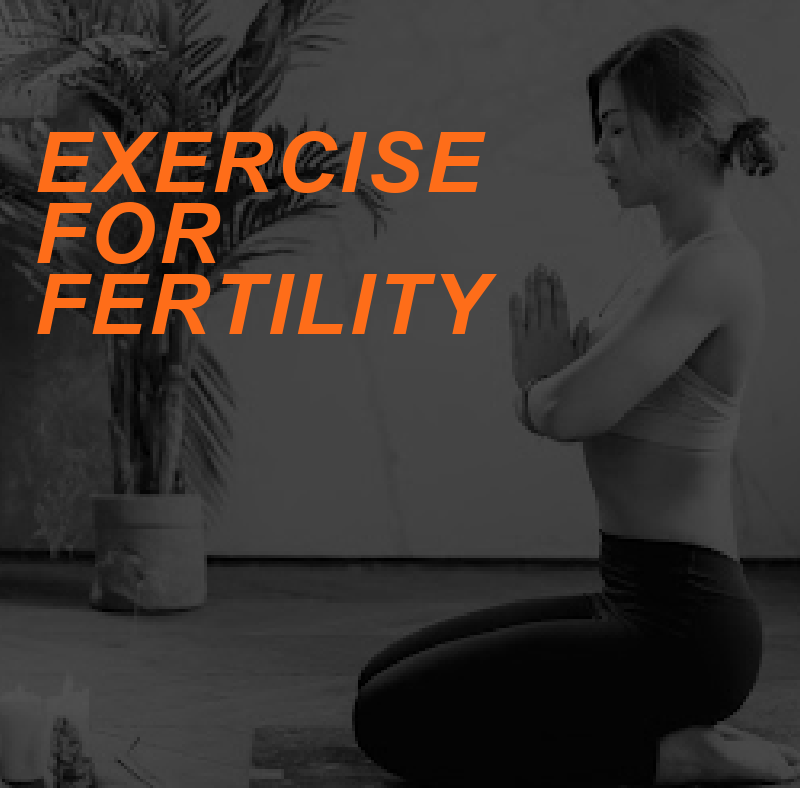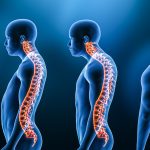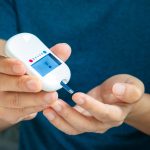
One topic revolving around fertility that deserves our attention, especially as fitness professionals, is exercise: Is it recommended to work out while trying to get pregnant? Can exercise actually improve the chances of conception? A meta-analysis published in 2019 answered the fertility and fitness question by critically reviewing the data they gathered(1).
According to the researchers, physical activity alone or in combination with a healthy diet can have beneficial effects on reproductive outcomes. They found that pregnancy rates can be twice as high on women maintaining regular exercise than those who don’t(2).
ACOG (American College of Obstetricians and Gynecologists) urges women both expecting and planning to be more physically active(3). Regular exercise tones the muscles and causes the heart to pump up 50% more blood supply for the mother and the growing baby. It also reduces stress and helps individuals sleep better(4).
Working out regularly also helps pregnant women maintain a healthy weight, minimizing the risk of complications, such as preeclampsia and gestational diabetes(5).
Pre-pregnancy Exercise for Beginners
It’s never too late for your moms-to-be to start exercising. With the approval from doctors, even couch potatoes can quickly begin an exercise routine given the proper guidance.
- Walking is a low-impact exercise that builds endurance.
- Cycling outdoors or on a stationary bike for 30 minutes a few times a week is a good exercise routine.
- Swimming helps women trying to conceive get a cardio workout without putting too much pressure on their joints. Swimming also lets them set the pace for an exercise routine that they’re most comfortable with.
- Tai chi helps improve balance. A study also shows that it reduces prenatal depression, sleep disturbances, and anxiety among women(6).
- Doing pelvic floor exercises can strengthen the muscles under the uterus, large intestine, and bladder(7).
- Stretching and doing yoga can help relieve stress and encourage positive thinking(8).
The American College of Sports Medicine (ACSM) stated that moderate exercise routines, just like the examples mentioned above, are sustainable. ACSM also said that moderate-intensity exercise occurs when individuals reach 64% to 76% of their age-predicted maximal heart rate (calculated as 220 minus the age)(9).
Wearing a heart rate tracker can help determine whether one’s heart rate is in a moderate heart rate zone.
Exercise Limitations
Physically active women categorized as obese are usually advised to take it easy with their exercise routine when trying to get pregnant. A study found that obesity was associated with difficulty conceiving. Further, women who were overweight and who also performed vigorous physical activity increased their chances of getting pregnant than overweight women who exercised more moderately. Interestingly, this effect was not observed in normal-weight women. Therefore, the researchers recommend limiting intense exercise to less than four hours per week in this group (10).
Instead of doing a high-intensity exercise routine daily, physically active women who are a normal weight can do moderate-intensity exercises like yoga. They’ll still get the same benefits without overworking their system.
These women may consider avoiding strenuous exercises or activities like:
- High-intensity interval training (HIIT)
- CrossFit
- Powerlifting
- Sprinting
- Racquetball
Other Essential Things to Consider
Not getting enough exercise can contribute to obesity. In addition to working out, diet also plays an important role when trying to lose fat or maintain a healthy weight.
Increasing healthy food options, such as whole grains, lean proteins, healthy fats, and lots of vegetables, has been shown to help with weight loss and improve fertility(11).
A Mediterranean diet with oily fish, meat, seasonal vegetables, and plenty of cold-pressed oils could be a good option. It’s also good to play safe with caffeine. According to research, caffeine intake should be no more than 200-300 mg daily(12).
For overweight women, studies suggest that losing just 10% of their current body weight can increase their chance of conceiving and boost their health(13).
For example, a woman is 5’4” and weighs 174 pounds. Her current body mass index (BMI) is 30, which means she is obese. To be at a healthy weight on the BMI chart, she must be 144 pounds. That means losing 30 pounds.
However, if she loses just 10% of her weight, her fertility will see improvements despite being overweight.
A study found that up to 40% of women undergoing infertility treatment deal with some stress levels(14). For this reason, these women need to incorporate mindfulness activities into their daily routines.
Additionally, the way people breathe can impact their whole bodies. Deep breathing helps regulate vital body functions, such as heart rate and blood pressure, and can also lower stress and improve the immune system. Performing deep breathing exercises together with general fitness training can increase muscle strength(15).
Having good posture is also essential when trying to get pregnant. Physical therapists or even a skilled personal trainer can evaluate posture and suggest muscle strengthening exercises. They may also recommend some lifestyle changes for posture improvement. Laying the groundwork for a better posture will prepare a woman’s body for the extra weight of pregnancy. Having a healthy posture will also decrease low back and pelvic pain(16).
Working out improves body image and mood. However, busy schedules make it difficult for most people to find time to exercise. Helping a woman incorporate a workout routine into her range of activities is essential to improve her health and her chances of conceiving.
Author’s Bio
 Casey Bloom’s field of studies is concentrated in language and in literature. She had worked as an advertising creative before writing for health and wellness sites. She is a vegan advocate who enjoys cooking, dancing, and music.
Casey Bloom’s field of studies is concentrated in language and in literature. She had worked as an advertising creative before writing for health and wellness sites. She is a vegan advocate who enjoys cooking, dancing, and music.
References
1.The effect of physical activity on reproductive health outcomes in young women: a systematic review and meta-analysis
https://pubmed.ncbi.nlm.nih.gov/31304974/
2.The effect of physical activity on reproductive health outcomes in young women: a systematic review and meta-analysis
https://pubmed.ncbi.nlm.nih.gov/31304974/
3.Physical Activity and Exercise During Pregnancy and the Postpartum Period
https://www.acog.org/clinical/clinical-guidance/committee-opinion/articles/2020/04/physical-activity-and-exercise-during-pregnancy-and-the-postpartum-period
4.Physical Activity and Exercise During Pregnancy and the Postpartum Period
https://www.acog.org/clinical/clinical-guidance/committee-opinion/articles/2020/04/physical-activity-and-exercise-during-pregnancy-and-the-postpartum-period
5.Physical Activity and Exercise During Pregnancy and the Postpartum Period
https://www.acog.org/clinical/clinical-guidance/committee-opinion/articles/2020/04/physical-activity-and-exercise-during-pregnancy-and-the-postpartum-period
6.Tai chi/yoga reduces prenatal depression, anxiety, and sleep disturbances
https://www.ncbi.nlm.nih.gov/pmc/articles/PMC3730281/
7. Pelvic Floor Muscle Traning Exercises
https://medlineplus.gov/ency/article/003975.htm
8.The Effect of Yoga on Stress, Anxiety, and Depression in Women
https://www.ncbi.nlm.nih.gov/pmc/articles/PMC5843960/
9.The Effect of Moderate Intensity Aerobic Exercise on Effect and Exercise Intention in Active and Inactive College Students
https://www.ncbi.nlm.nih.gov/pmc/articles/PMC6719814/
10.Body mass index, physical activity, and fecundability in a North American preconception
cohort study. https://www.fertstert.org/action/showPdf?pii=S0015-0282%2816%2961103-2
11.Diet and fertility: a review
https://pubmed.ncbi.nlm.nih.gov/28844822/
12.Caffeine and caffeinated beverage consumption and fecundability in a preconception cohort
https://www.sciencedirect.com/science/article/abs/pii/S0890623816300727?via%3Dihub
13.Losing Weight
https://www.cdc.gov/healthyweight/losing_weight/index.html
14.The relationship between stress and infertility
https://www.ncbi.nlm.nih.gov/pmc/articles/PMC6016043/
15.Breathe Deeper to Improve Health and Posture
https://www.healthline.com/health/breathe-deeper-improve-health-and-posture
16.Pregnancy and Posture https://www.urmc.rochester.edu/encyclopedia/content.aspx?contenttypeid=134&contentid=8







